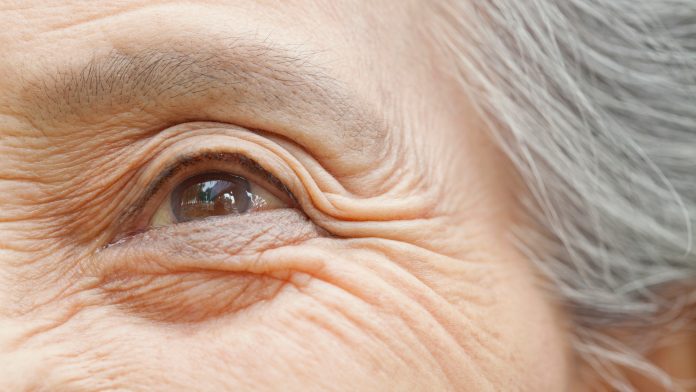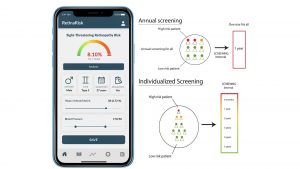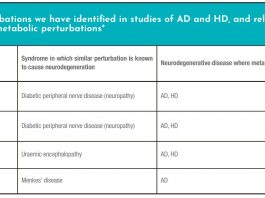Professor Einar Stefánsson explains how the RetinaRisk app offers a truly personalised approach by identifying patients’ individualised risk of developing sight-threatening diabetic retinopathy.
The global diabetic population of over 460 million has tripled since 2000 and is expected to exceed 700 million by 2045. As the majority of people living with diabetes are likely to develop diabetic retinopathy, one of the leading causes of blindness in the working age population, it is vital to ensure that the diabetes epidemic does not become an epidemic of blindness. In most cases, vision loss due to diabetic retinopathy can be prevented with timely diagnosis and early treatment.
The prevention of diabetic retinopathy begins with primary health care and should include regular eye screening and enhanced diabetes self-care. Healthcare professionals are at the frontline of supporting people with diabetes to understand how to look after their eyes, access eye health exams, and to refer those requiring treatment.
Increased awareness of diabetic eye complications and enhanced educational efforts are critical and essential tools for early diagnosis and management of diabetic retinopathy. Various digital health solutions are being introduced to enhance the availability, patient centricity, quality, efficiency, and cost-effectiveness of remote evaluation and management of diabetic retinopathy. Solutions like AI-powered, cloud-based systems for the grading of fundus images are being introduced and various online educational programmes offered.
The clinically validated RetinaRisk is one of these new digital health solutions that can help to raise awareness of diabetic retinopathy but also streamline and make eye screening programmes around the world more efficient and cost-effective. The revolutionary RetinaRisk algorithm reliably identifies patients’ individualised risk of developing sight-threatening diabetic retinopathy in the following 12 months, based on their clinical risk factors (type and duration of diabetes, Hb1Ac, blood pressure, gender, and retinopathy stage). Knowing your risk of developing sight-threatening eye disease is vital for early detection and timely treatment to prevent unnecessary vision loss.
The RetinaRisk app
The RetinaRisk app empowers people living with diabetes to assess and monitor their individualised risk of developing sight-threatening diabetic retinopathy, based on their risk profile. The app allows patients to better understand their condition and motivates them towards enhanced diabetes care. It supports patient self-management by demonstrating the importance of regular eye examinations and seeking timely medical assistance, as well as motivating people with diabetes to become more responsible and better-informed patients.
Users can track their risk progression over time and analyse each result, which includes recommendations for risk reduction and an adherence programme that assists with better diabetes treatment. There is extensive educational material in the app which is constantly updated and modified as well as connection to physicians and healthcare professionals.
The app’s easy-to-visualise, effective, and efficient patient education tools vividly demonstrate how improvement of modifiable risk factors (e.g., blood glucose (HbA1c), blood pressure, etc.) could significantly lower the risk of potentially blinding diabetic eye disease and expensive interventions. It also includes detailed guidelines and useful information on diabetes, diabetic retinopathy, and improved self-care, which empowers patients to become more active participants in their own wellness journey. RetinaRisk raises awareness about the importance of eye health and provides patients with information that helps them manage their health decisions.
The RetinaRisk API solution
RetinaRisk not only empowers people living with diabetes to become more aware and motivated towards enhanced self-diabetes care. It can also streamline and personalise eye healthcare in hospitals and clinics based on risk prediction.
The recently launched RetinaRisk API (Application Programming Interface), is a system-to-system solution that increases the clinical safety of diabetic patients by identifying high-risk patients who need immediate care to prevent vision loss. By stratifying and recommending variable intervals for eye screening based on a patient’s risk profile, RetinaRisk enables hospitals and clinics to streamline eye screening to make it more efficient and cost-effective.
Real-life use of the RetinaRisk algorithm over the past five years has led to enhanced clinical safety for high-risk patients who may be tagged for eye screening every three to six months, rather than the general yardstick of an annual eye exam. For low-risk patients, it may be enough to have an eye screening every two to three years, depending on their risk profile, saving them from unnecessary and costly medical appointments and inconvenience.
Clinical validation and real-life use of RetinaRisk shows that personalised, risk-based eye screening leads to:
- Increased clinical safety – RetinaRisk recommends eye screening for high-risk patients every six months as opposed to the current annual one size fits all approach
- 40-60% fewer eye screening appointments for low-risk patients without compromising clinical safety, thereby liberating valuable time in clinics to be used on high-risk patients and increased capacity in ‘high prevalence’ diabetes areas
- Reduction of 40-60% in healthcare costs
In a 2016 article, Lund et al showed that using the RetinaRisk risk calculator could reduce the screening frequency in an English diabetes cohort by 40% with no loss of clinical safety. An article published earlier this year by Estil et al documents a similar reduction in frequency and cost of diabetic eye screening by 50% in a Norwegian clinic, as did Schreur et al2019 in Holland, using the RetinaRisk calculator. This means that capacity for eye screening can almost be doubled in densely populated areas with high prevalence of diabetic retinopathy, to avoid preventable blindness.
Impact of COVID-19 on eye health
The COVID-19 crisis is having a dramatic impact on global eye health by delaying the eye screening of millions of people due to lockdown, which will result in enormous backlogs when life gets back to normal. In many countries, ophthalmologists have also raised concerns that, due to COVID-19, patients are skipping crucial appointments for eye treatment, without which there is a high risk of people going unnecessarily blind or suffering significant vision loss. Personalising screening for diabetic retinopathy can be instrumental in dealing with the foreseeable backlog in diabetic eye screening due to COVID-19 cancellations. RetinaRisk offers a scientific approach for calling in high-risk patients for priority eye screening when dealing with these large and growing backlogs.
During times like the COVID-19 lockdown, RetinaRisk can serve as a tool to determine which patients should be allowed to attend eye screening and come for treatment and to ensure that people living with diabetes can assess and monitor their own risk of developing diabetic retinopathy despite halted services.
A personalised approach to healthcare
Recognising the world’s strained healthcare budgets, shortage of physicians, and growing pressure from waiting lists and overbooked clinics, personalised approaches based on risk assessment are more vital than ever. RetinaRisk is focused on wellness, prevention, and personalisation through digital engagement and predictive analytics.
We are witnessing an explosion of digital health and other fundamental changes in healthcare with patients becoming much more knowledgeable about their care pathways. RetinaRisk offers a truly personalised approach leading to the right patient receiving the right treatment at the right time.
The RetinaRisk algorithm was developed by Dr Einar Stefansson, Professor at the University of Iceland’s Department of Ophthalmology, and Dr Arna Gudmundsdottir, an endocrinologist at the National Hospital Reykjavik, who have over 30 years’ experience in screening for diabetic retinopathy and treating diabetes.
The algorithm is based on extensive international research and has been clinically validated in over 25,000 diabetic patients in five countries and found to be robust (Aspelund et al., 2011; van der Heijden et al, 2014; Soto‐Pedre et al, 2015; Lund et al, 2016; Schreur et al, 2019).
The RetinaRisk app can be downloaded on:
Additional information can be found at www.retinarisk.com
Professor Einar Stefánsson MD, PhD
Board Member & Founder
Department of Ophthalmology
National Hospital Reykjavik
University of Iceland
hello@retinarisk.com
www.retinarisk.com
Please note, this article will also appear in the fourth edition of our new quarterly publication.










